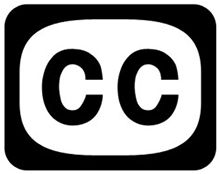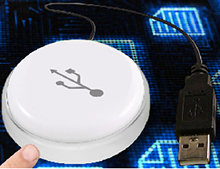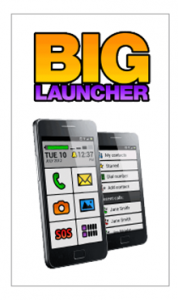When researching this accessibility project we discovered that different disability groups often favour different products based on the benefits that they offer.
Vision
 People with low vision tend to use products which enable them to make images on the screen bigger, display the image on a larger screen such as a television, or change the colours to make viewing the screen more comfortable.
People with low vision tend to use products which enable them to make images on the screen bigger, display the image on a larger screen such as a television, or change the colours to make viewing the screen more comfortable.
As covered in the What’s accessible section, most Android and Windows devices have helpful built-in features that allow you to magnify the screen, change to high contrast themes or invert the colours, and make the text larger.
Other products such as the Google Chromecast mentioned in the What’s available section even allow for the whole screen of a phone or tablet to be displayed on a large television screen, making it much easier to see.
 Those who are blind can also effectively use Android and Windows devices due to the inclusion of the Talkback screen reader in Android, Narrator in Windows and the NVDA screen reader which can be freely downloaded.
Those who are blind can also effectively use Android and Windows devices due to the inclusion of the Talkback screen reader in Android, Narrator in Windows and the NVDA screen reader which can be freely downloaded.
Mobile phone plans for people who are blind or have low vision tend to use voice, text and data so a plan that includes all of these options is likely to be effective.
Hearing
 People who are Deaf or hearing impaired can benefit from using affordable devices which display information visually and support the playback of captioned video. The Android and Windows operating systems discussed in the What’s accessible section both provide this support.
People who are Deaf or hearing impaired can benefit from using affordable devices which display information visually and support the playback of captioned video. The Android and Windows operating systems discussed in the What’s accessible section both provide this support.
The What’s accessible section also covers media streaming devices such as the Google Chromecast and the Apple TV which provide support for captioned video.
In relation to mobile phone plans, people who are Deaf or hearing impaired tend to favour plans that focus on data and text messaging. With free instant messaging apps now available, some Deaf or hearing impaired users prefer data-only plans as they can use video chat apps for sign language and instant
messaging apps for text.
Mobility
 People with a mobility impairment can particularly benefit from recent versions of Android and Windows devices.
People with a mobility impairment can particularly benefit from recent versions of Android and Windows devices.
As we highlighted in the What’s accessible section, the latest version of Android includes switch-key support and the latest version of Windows includes improved voice recognition software and the Cortana digital assistant, which provides greater flexibility in the ability to interact with the device effectively.
USB buttons, as discussed in the What’s accessible section, provide low-cost ways to interact with devices rather than having to buy more expensive specialist switch key products.
Mobile phone plans for people with a mobility impairment have tended to value voice and data due to the difficulty of inputting text messages, but improved voice recognition allows text messages to be dictated. All of this has resulted in people generally looking at plans that include voice, text and data.
Cognitive
People with a cognitive impairment generally prefer environments which require few tasks to learn, a simple visual layout and an easy language structure, all designed to hold the user’s attention and not rely heavily on recalling multiple commands. With this in mind, an Android tablet paired with the BIG Launcher app can significantly reduce the complexity of a tablet while maintaining all of its functionality.
 The BIG Launcher app reduces the home screen to six large customisable buttons, allowing the user to specify just the items which are used the most often – yet all the other apps can still be accessed if required. The BIG Launcher is also compatible with the built-in Android accessibility features.
The BIG Launcher app reduces the home screen to six large customisable buttons, allowing the user to specify just the items which are used the most often – yet all the other apps can still be accessed if required. The BIG Launcher is also compatible with the built-in Android accessibility features.
While more expensive devices like the iPad are generally favoured by particular cognitive disability groups such as people with autism due to the wide range of educational apps, affordable Android devices also provide a number of apps to support people with cognitive disabilities. What’s more, the number of apps available on both Android and iOS devices such as the iPad are rapidly increasing.
For Windows users, USB buttons may also assist people with a cognitive impairment by converting multiple complex commands into the simple press of a button.
